Camping is one of the purest ways to reconnect with nature, offering an escape from the noise and demands of everyday life. For some, it’s a weekend ritual, and for others, it’s a seasonal tradition or even a full-time lifestyle.
Whether you’re heading to a national park, pitching a tent beside a remote lake, or spending nights off-grid in the desert, the success of your camping trip often hinges on one major decision: the vehicle you bring along.
Your car isn’t just a way to get from point A to point B—when you’re camping, it becomes an extension of your campsite. It’s your gear hauler, your mobile shelter, your backup plan in bad weather, and sometimes even your bed for the night. The right vehicle can make your trip smooth, safe, and comfortable.
The wrong one can leave you frustrated, stuck, or ill-prepared. And while most people think of four-wheel drives and rugged SUVs when they think of camping, the truth is more nuanced: it’s not always about brute strength—it’s about utility, space, and adaptability.
Not every vehicle is cut out for the demands of the great outdoors. Some are simply too small to carry gear, others lack the clearance or traction for rough terrain, and some are so performance-focused that even gravel roads feel like an assault.
On the flip side, some vehicles strike an almost perfect balance, offering enough room to sleep in, space to pack your essentials, and the flexibility to go from pavement to dirt without skipping a beat.
These vehicles may not always look rugged at first glance, but they more than prove themselves when you’re deep in the woods or miles from the nearest town.
In this article, we’re breaking down five cars that are ideal for camping, whether you’re a casual camper or a backcountry explorer. These vehicles go above and beyond in terms of practicality, off-road capability, interior space, and long-term reliability.
They’re the ones you can count on, whether you’re pulling into a forest campsite or setting up a makeshift base in the middle of nowhere. On the other side of the trail, we’ll also look at five cars that just aren’t built for camping—vehicles that, despite their strengths on highways or in cities, fall apart when exposed to the demands of the outdoor lifestyle.
They may have style, speed, or luxury, but when it comes to sleeping under the stars, carrying gear, or navigating rough terrain, these cars simply don’t cut it.
Camping is about freedom, but the vehicle you choose can either give you more of it or severely limit your experience. Whether you’re looking for your next adventure rig or trying to decide if your current car can handle the challenge, this guide will help you understand what makes a car great—or not so great—for life outdoors.
Also Read: 13 Engines That Made Japanese Cars Unstoppable and Changed Performance Culture Forever
5 Cars That Are Perfect for Camping (Expanded)
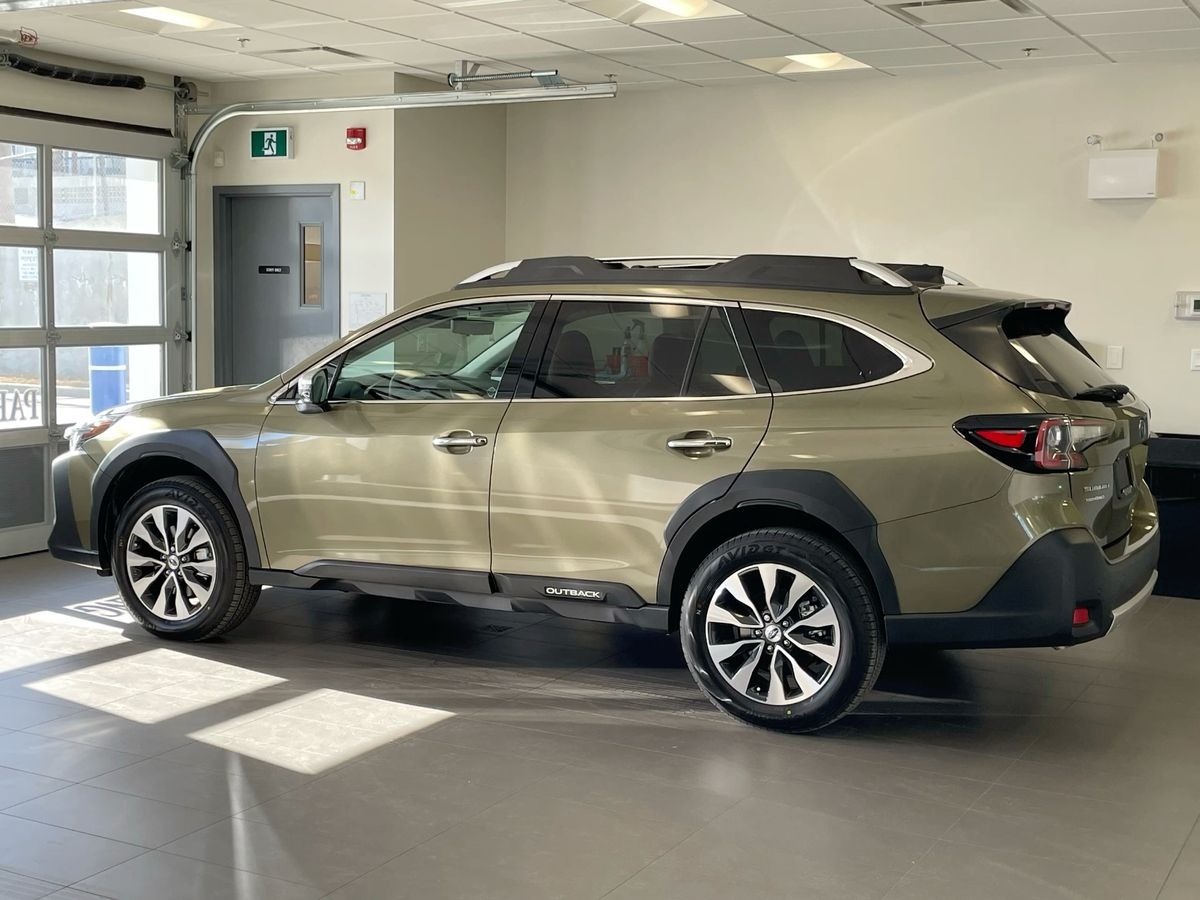
1. Subaru Outback
The Subaru Outback has long held its position as a favorite among outdoor enthusiasts, and for good reason. Its car-like handling mixed with SUV practicality makes it a highly versatile choice for campers who value comfort without sacrificing capability.
One of the standout features of the Outback is its standard symmetrical all-wheel drive, which ensures optimal traction on slippery trails, muddy campsites, and snowy forest roads. While it doesn’t have the brute off-road force of a dedicated 4×4, the Outback confidently handles most terrain a typical camper will encounter.
With 8.7 inches of ground clearance and features like X-Mode for slippery surfaces, it’s more than capable of reaching off-the-grid sites.
Beyond performance, the Subaru Outback also excels in interior space and usability. With the rear seats folded flat, the cargo area becomes large enough to sleep two adults comfortably. Many campers convert the back into a cozy sleeping nook, using foam mattresses or camping pads.
The extended roofline offers ample room for rooftop cargo boxes or tents, giving you even more flexibility. Whether you’re sleeping inside the vehicle or setting up camp beside it, the Outback offers options without forcing trade-offs. There’s also plenty of cubby space and clever storage compartments for stashing smaller gear, which adds to its utility.
Technology also plays a role in making the Outback camping-friendly. Subaru includes multiple USB ports, optional solar power integrations through third-party gear, and large infotainment screens that can help navigate to remote destinations.
Certain trims even come with built-in power outlets and Wi-Fi capability, which is a real bonus for those working remotely or looking to stay connected in the wilderness.
Add to that excellent fuel economy for its class, especially the 4-cylinder models, and you’ve got a long-haul-ready vehicle that can traverse mountain passes without draining your wallet at the pump.
What makes the Outback especially appealing is that it doesn’t scream “rugged” or “aggressive” the way some off-roaders do, but it quietly performs just as well in most conditions.
It’s a sleeper hit for those who value balance: a vehicle that gets you to remote sites, accommodates gear, and doubles as shelter—all while being a practical daily driver. For first-time campers and seasoned adventurers alike, the Subaru Outback offers a well-rounded package that’s difficult to beat.
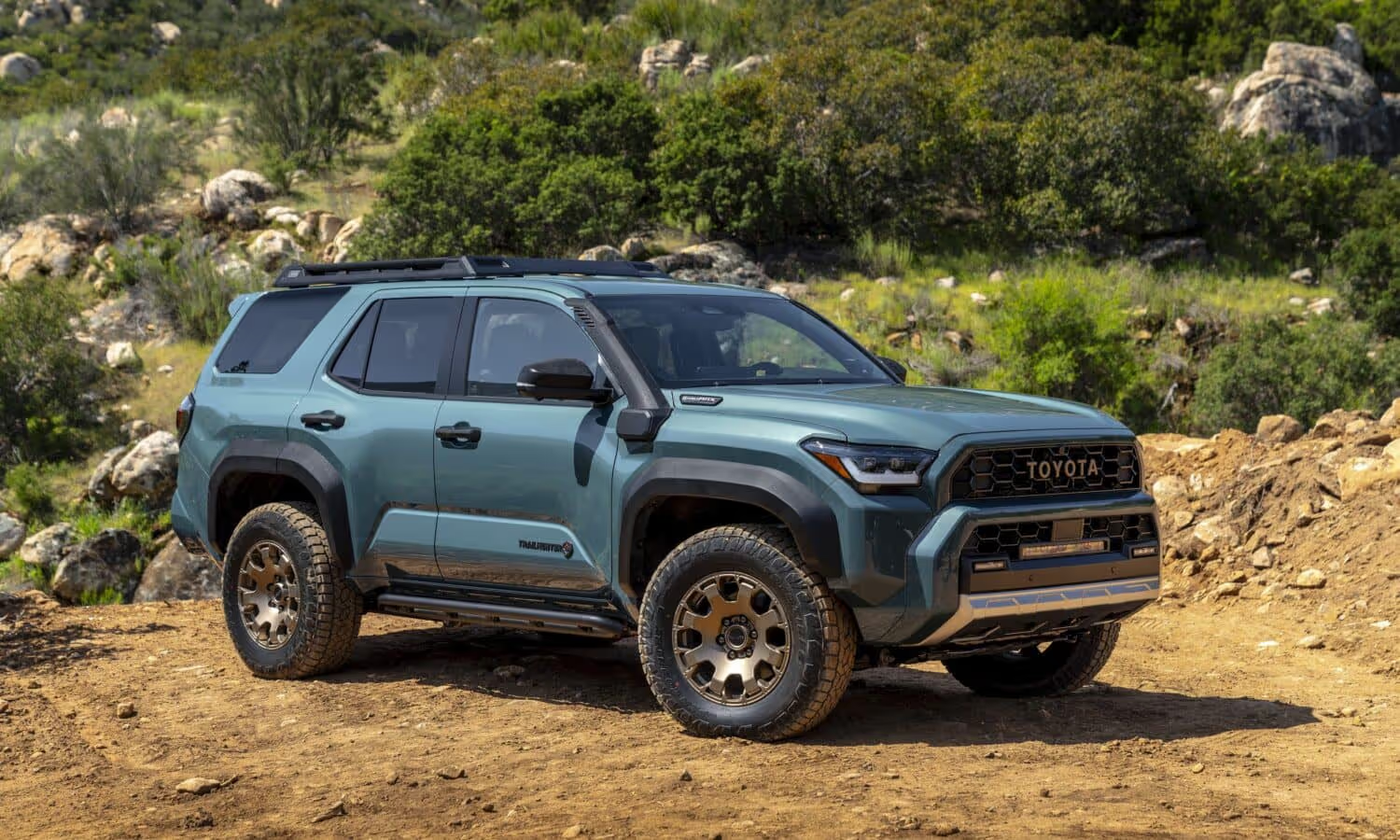
2. Toyota 4Runner
When it comes to proven durability and true off-road pedigree, few vehicles can match the reputation of the Toyota 4Runner. Built on a rugged body-on-frame platform, the 4Runner is more of a traditional SUV than a crossover, which gives it serious clout when the pavement ends.
Whether you’re tackling steep, unmaintained fire roads or fording shallow streams, this vehicle is in its element. The available four-wheel-drive system with selectable terrain modes and crawl control helps maintain grip and balance, even in tricky conditions. Unlike crossovers that simulate off-road ability, the 4Runner delivers the real deal.
Inside, the 4Runner is cavernous. The rear seats fold nearly flat, transforming the back into a generous sleeping space. Many campers build custom sleeping platforms that lift the bed area and include drawers or storage bins underneath for gear. This transforms the SUV into a fully functional micro-camper, perfect for overnight trips or extended excursions.
Add a rooftop tent or hitch-mounted cargo box, and you have enough storage and sleeping space for a family or group. The rear power window is another beloved feature—it allows for passive airflow or a quick handout slot for snacks, fishing rods, or firewood.
Toyota also makes a range of overlanding accessories and factory trim levels designed specifically for the outdoors, such as the TRD Off-Road and TRD Pro variants. These trims include skid plates, upgraded suspension, all-terrain tires, and locking differentials.
The factory support for camping gear integration is outstanding—everything from roof racks to tailgate accessories can be added with ease. It’s a platform made to be customized, which is perfect for campers who want to fine-tune their vehicle for long-term adventures.
While its fuel efficiency is below average, that trade-off is easily justified by its capability and reliability. The 4Runner is one of the few vehicles you can drive confidently for 200,000 miles and still trust to get you home from a remote trailhead.
In the world of camping vehicles, reliability isn’t just a bonus—it’s peace of mind. With its proven track record, storage flexibility, and robust support system, the Toyota 4Runner earns its place as one of the most dependable camping vehicles on the market.
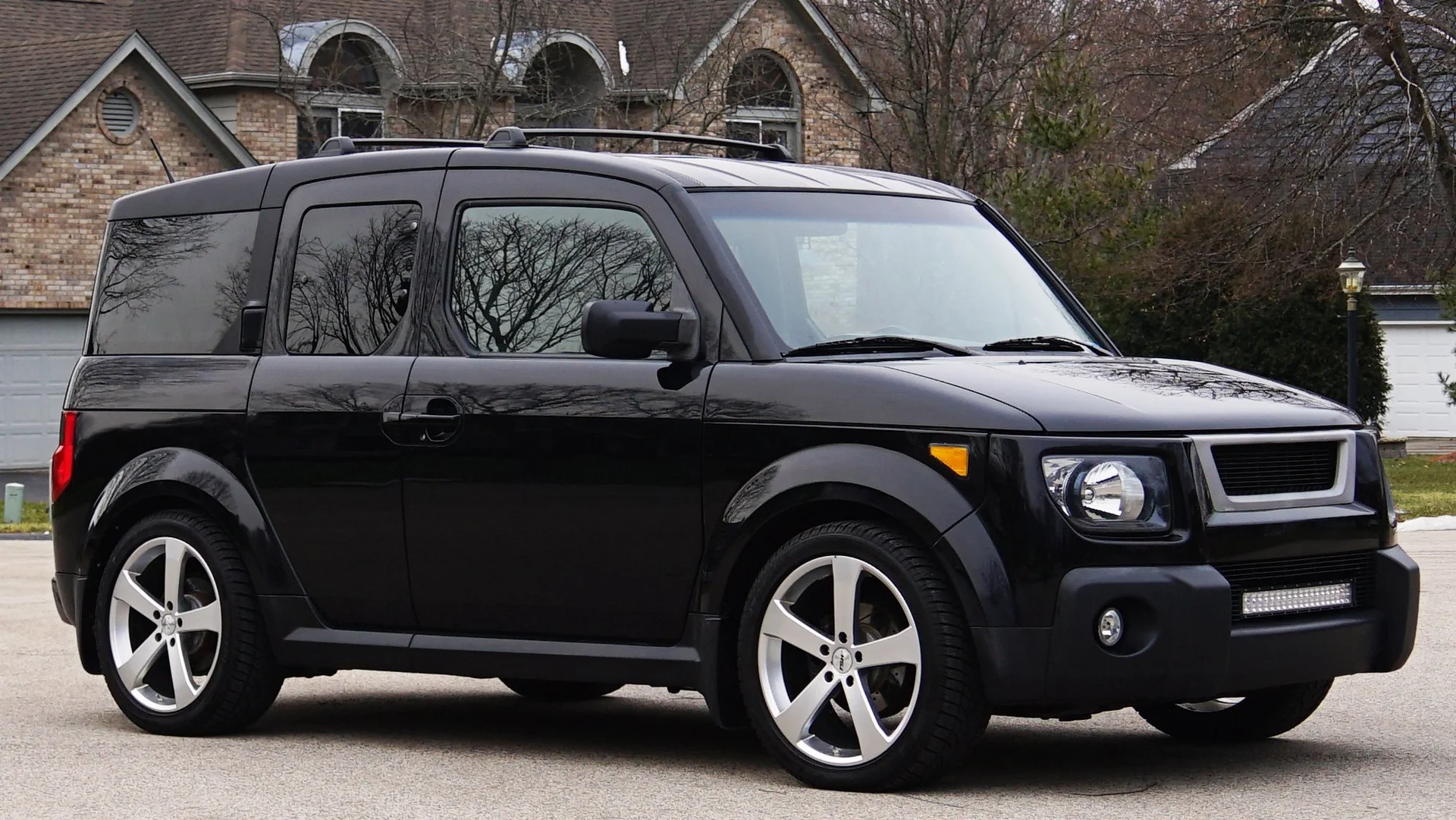
3. Honda Element
Though it was discontinued in 2011, the Honda Element remains a cult favorite among campers and DIY vanlifers—and for good reason. With its boxy shape, massive rear access, and water-resistant floors, the Element seems almost designed with campers in mind.
The suicide-style rear doors open wide, allowing for easy loading of large items like coolers, mountain bikes, or even small kayaks. The rear seats can be folded against the sidewalls or removed entirely, creating a massive, flat, and highly usable space for sleeping or converting into a small camper setup.
What makes the Honda Element particularly beloved is its adaptability. Campers have turned these into full-on micro-RVs with sleeping platforms, slide-out drawers, folding tables, and even battery setups. The ceiling height allows most adults to sit comfortably, and with the back doors open, it creates a breezy, open space that feels connected to nature.
The low cargo floor and squared-off design maximize every cubic inch of space. It’s one of the few compact vehicles that offers the sleeping space of a van without the bulk or fuel consumption of one.
While not a hardcore off-roader, the Element’s all-wheel-drive models perform reliably on unpaved roads and light trails. It’s not meant for rock crawling or deep mud, but it will get you to nearly any established campground, dispersed site, or beachside parking spot.
The fuel efficiency is solid, and because it’s based on Honda’s CR-V platform, it’s both inexpensive to maintain and extremely reliable. Despite being out of production, parts remain widely available, and the Element has a thriving online community full of DIY build guides and conversion ideas.
The Element also appeals to minimalists and budget-conscious adventurers. A well-maintained used Element costs a fraction of a new SUV, and with a little ingenuity, it can be transformed into a compact and capable camping companion. Whether you’re a solo traveler, a couple, or someone new to camping who doesn’t want to commit to a full van build, the Honda Element provides an affordable, practical, and highly enjoyable gateway into car camping culture.
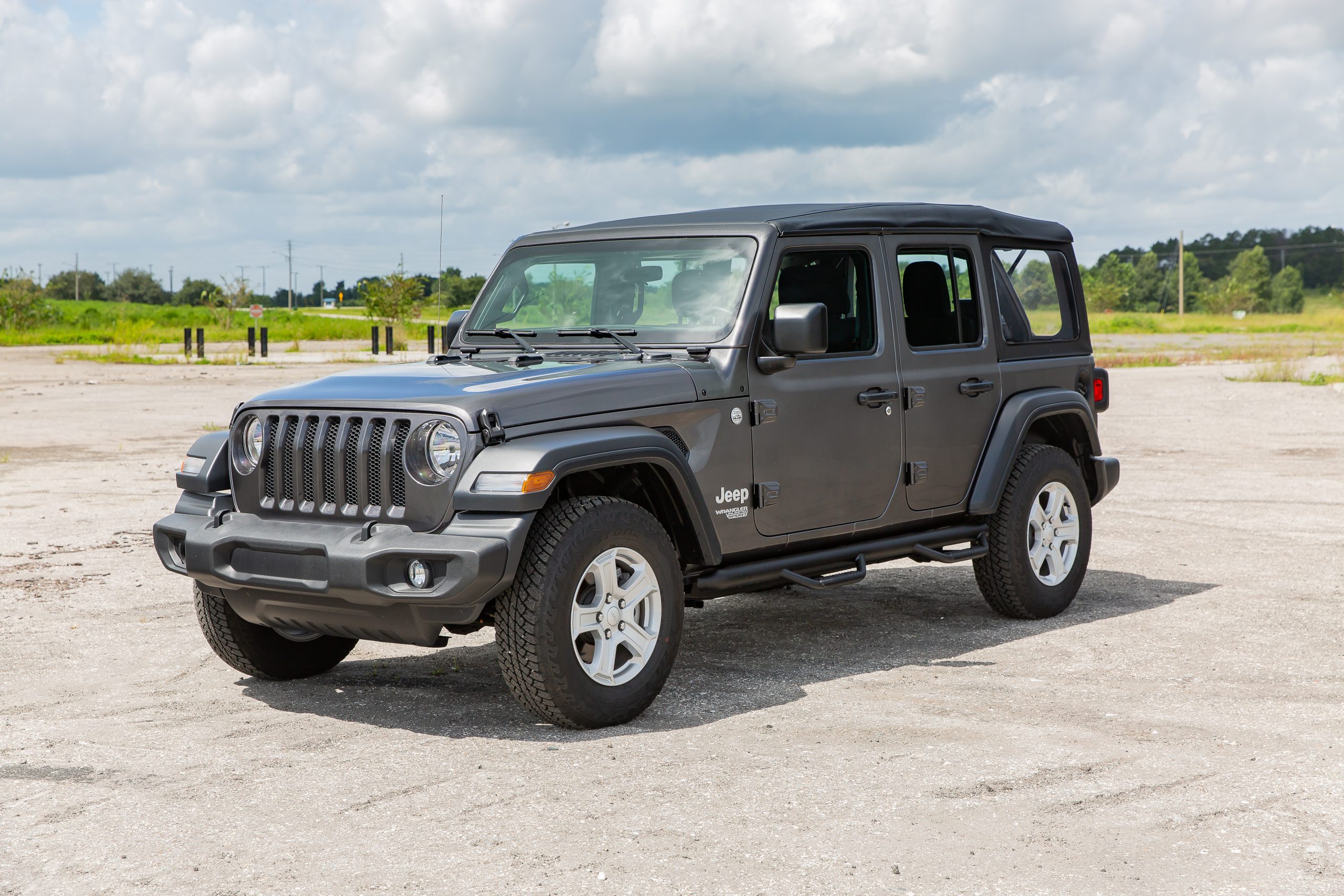
4. Jeep Wrangler (4-Door)
The Jeep Wrangler has earned its legendary status not through luxury or refinement, but through sheer off-road dominance. If your idea of camping involves remote wilderness trails, rocky switchbacks, or creek crossings, the Wrangler is your ideal companion.
The 4-door Unlimited version takes everything great about the original and adds the space needed for real-world camping utility. Its solid axles, locking differentials, and high ground clearance make it one of the most trail-ready vehicles straight from the factory.
Camping with a Wrangler is about more than just reaching the site—it’s about building an adventure rig that becomes part of your base camp. The vehicle supports an extensive aftermarket ecosystem, allowing owners to equip roof racks, rooftop tents, tailgate kitchens, and interior storage systems.
There are even companies that make drawer slide systems and modular sleeping platforms specifically for Wranglers. The modular nature of the vehicle—including removable doors and roof panels—means you can customize your setup depending on the weather and terrain.
Inside, while the space isn’t as cavernous as a van or full-size SUV, the flat-folding rear seats and tall cabin make for a cozy sleeping space for one or two people. The tailgate swings out barn-door style, which many campers use to mount tables or accessories.
And because the Wrangler is so popular among adventurers, there’s a massive community that shares camping tips, builds, and troubleshooting support. That kind of network becomes invaluable when you’re deep in the woods or halfway through a multi-state road trip.
The biggest trade-offs with the Wrangler are ride quality and fuel economy. It’s not the most comfortable vehicle on pavement, and long highway drives can get noisy. But what it lacks in luxury, it more than makes up for in experience. There’s a reason so many long-term overlanders choose the Wrangler—it’s not just capable, it’s iconic. For campers who want their vehicle to be as rugged and ready as they are, the Wrangler is a natural fit.
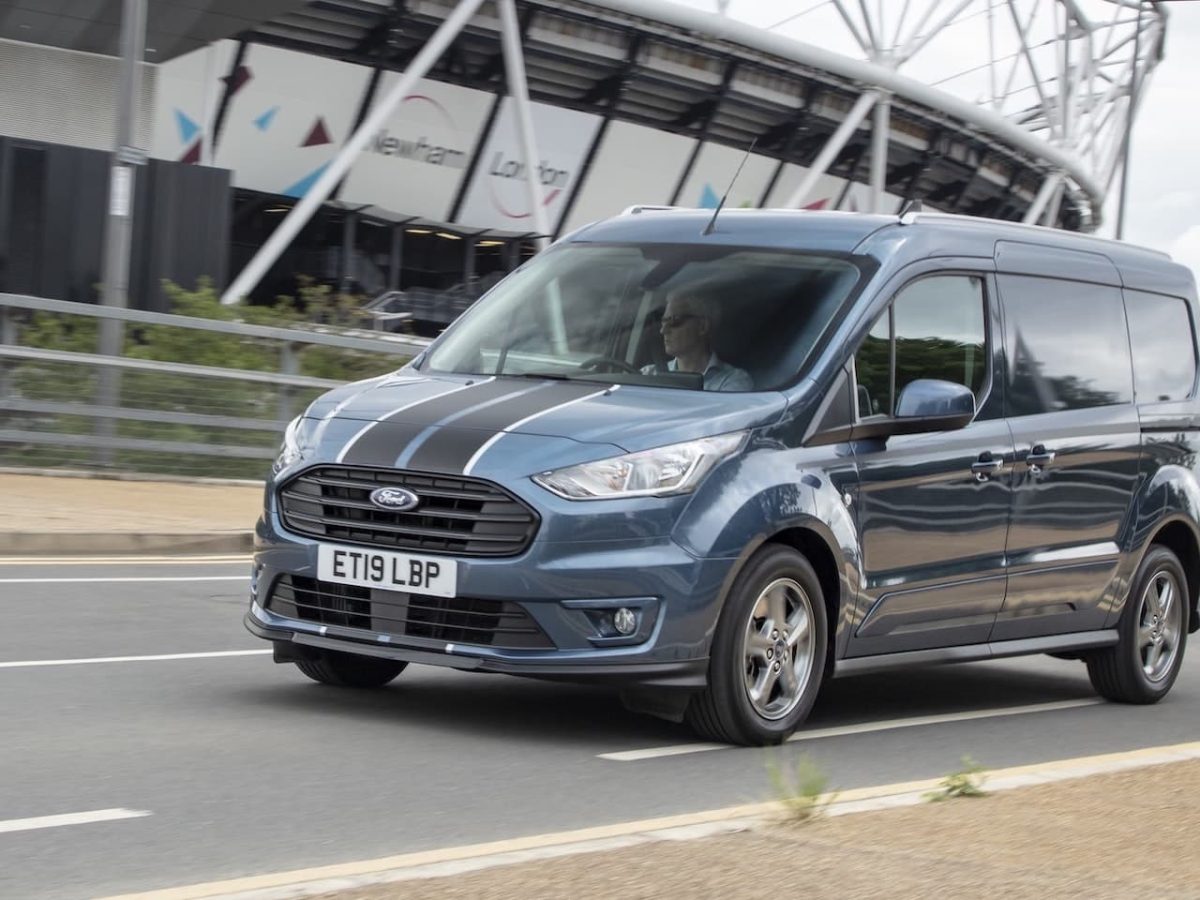
5. Ford Transit Connect (or Similar Vans)
For campers who prioritize indoor living space, the Ford Transit Connect offers an excellent blend of practicality and comfort in a compact package. Unlike full-size vans, the Transit Connect is small enough to fit in city parking spots yet large enough to comfortably sleep two people and store a weekend’s worth of gear. The low floor and high roof (especially in the long-wheelbase version) make it easy to build out with beds, shelves, and other camping amenities.
The Transit Connect is a favorite among stealth campers—those who sleep in urban or semi-urban areas—because it doesn’t look like a camper. With tinted windows and a neutral profile, it blends in with other vehicles. But inside, it can be transformed into a camper’s dream.
The flat cargo area allows for easy installation of sleeping platforms, storage drawers, or even small kitchens. Many DIY vanlifers have created full micro-homes inside a Transit Connect with insulation, lighting, and battery-powered ventilation systems.
Driving the Transit Connect is another benefit—it handles much like a car, which is a big plus for those intimidated by large vans or SUVs. Its turning radius and visibility are excellent, making it a breeze to drive in both urban and rural settings.
The gas mileage is far better than that of traditional adventure vans or 4x4s, which can extend your range and reduce the need for frequent fill-ups. While it’s not built for rough trails or true off-roading, it’s perfectly suited for paved roads, gravel lots, and moderately maintained forest roads.
Another underrated aspect is customization. Unlike SUVs, where you’re often constrained by design, the interior of a Transit Connect is a blank canvas. You can add solar panels, build inverters, install roof vents, and even wire in lighting—all within a manageable footprint. For those seeking a low-cost entry into van camping, or for weekend warriors who want a versatile vehicle for both work and play, the Ford Transit Connect is one of the most practical and rewarding options available.
5 Cars That Can’t Handle a Tent
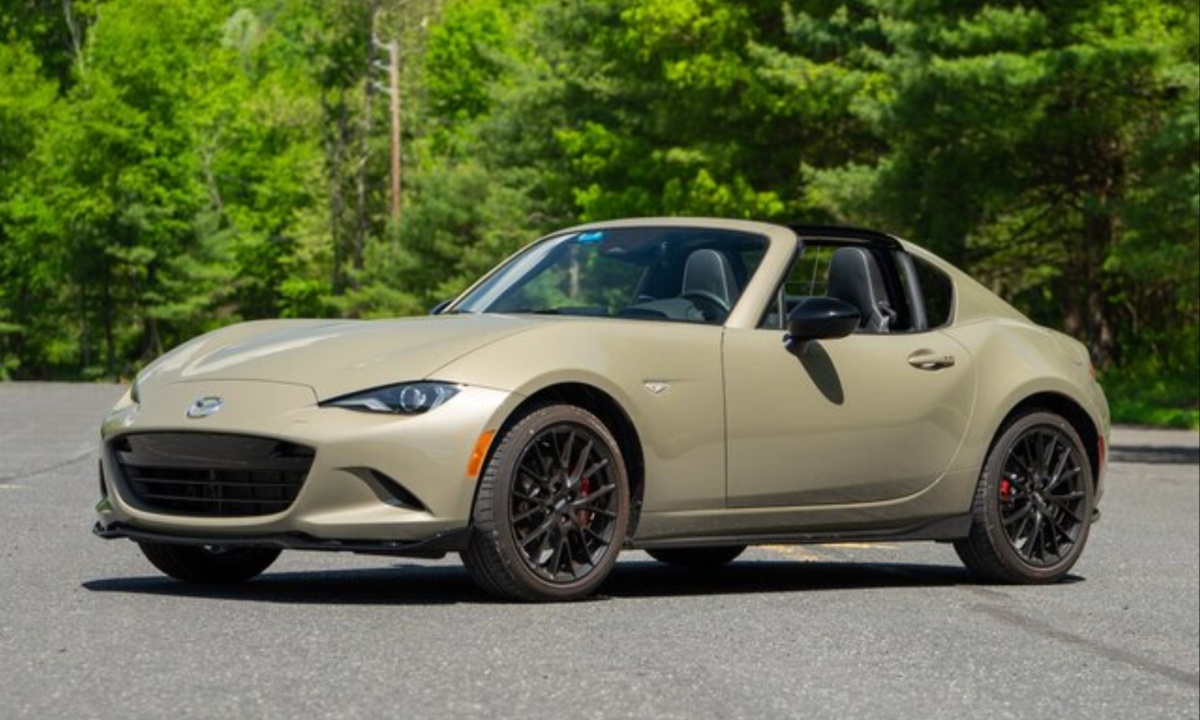
1. Mazda MX-5 Miata
The Mazda MX-5 Miata is a marvel of lightweight engineering and driving excitement, but as far as camping suitability goes, it’s one of the worst choices you could make. Its compact two-seater design leaves virtually no room for anything beyond the bare essentials.
The trunk is laughably small—barely enough to fit a carry-on suitcase—so attempting to squeeze in a tent, sleeping bag, camp stove, cooler, or even a backpack becomes a frustrating game of Tetris. Even for a solo camper, this quickly becomes an exercise in minimalism taken too far.
Sleeping inside the Miata is a no-go unless you’re under five feet tall and incredibly flexible. The cockpit is tight, and the bucket seats are molded more for spirited cornering than restful reclining. Even if you attempted to curl up inside, the lack of insulation and ability to stretch out would make for a miserable night.
Setting up a tent is your only option, but without the ability to carry substantial gear or supplies, your comfort and preparedness will be severely limited. For spontaneous road trips or overnights, the Miata simply doesn’t offer the flexibility or space to make it viable.
Ground clearance is another major issue. The Miata sits incredibly low to the ground, making it highly susceptible to damage from even moderately uneven surfaces. While it’s agile and responsive on winding roads, the moment you attempt to navigate a gravel road, potholes, or a campsite with uneven terrain, you’re risking the integrity of your undercarriage. The suspension is tuned for sport, not shock absorption over rocks or dirt, making any off-pavement driving both uncomfortable and potentially damaging.
Despite these limitations, some adventurous spirits have attempted to camp with a Miata. There are rooftop tent setups made specifically for small vehicles, but the practicality of such additions is questionable given the Miata’s limited roof load capacity and minimal cargo support. At the end of the day, the Miata is built for spirited drives through mountain roads, not for rugged nights under the stars. It excels as a toy for the tarmac, but not as a tent-hauler or mobile campsite.
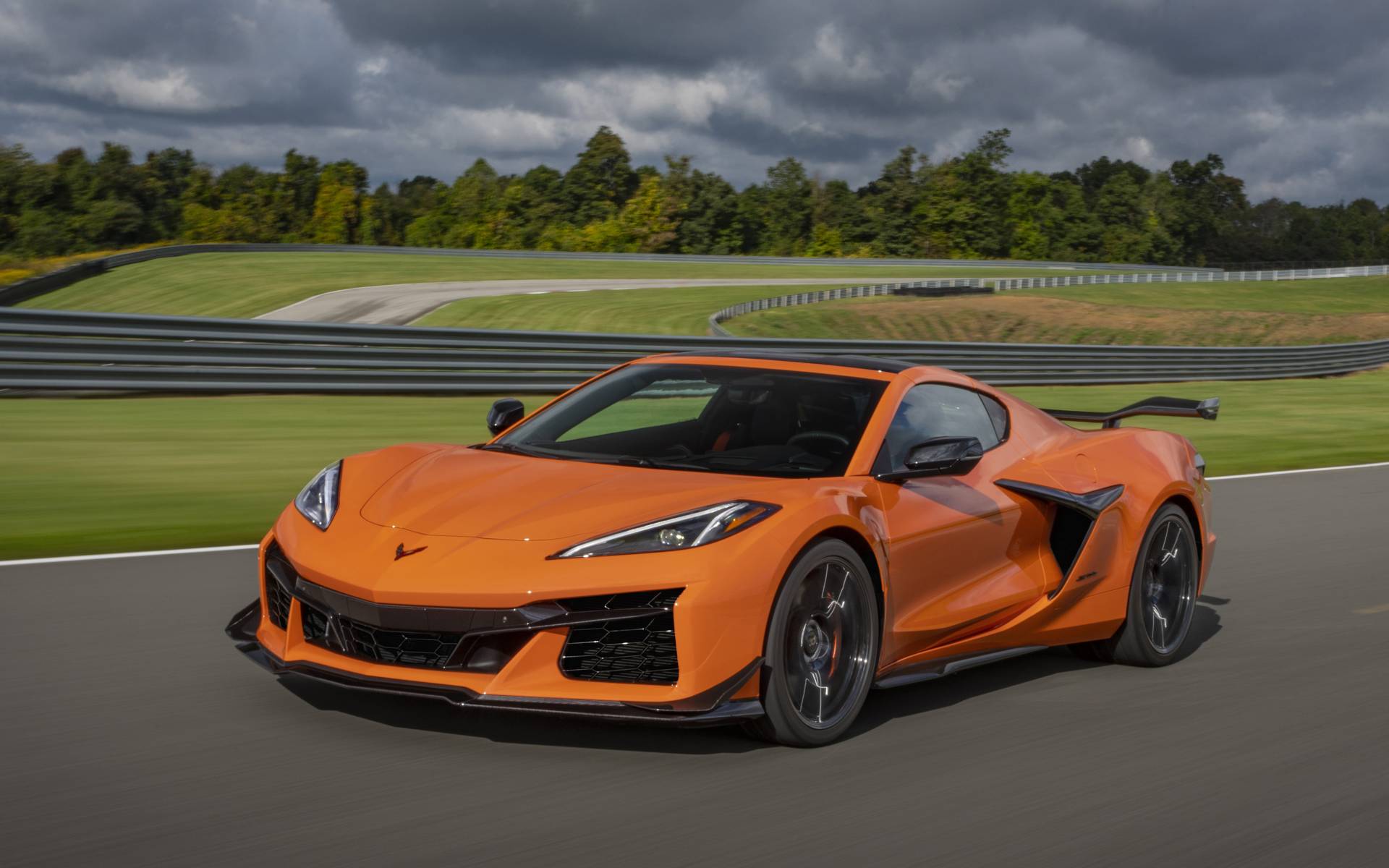
2. Chevrolet Corvette
The Chevrolet Corvette, particularly the C7 and C8 models, is a poster child for American performance, but when it comes to camping, it’s a complete mismatch. With a low, aerodynamic design and aggressive stance, it simply doesn’t have the ground clearance, storage, or interior space needed for even the most minimal of camping trips. While it may turn heads at a luxury hotel, it becomes entirely impractical the moment you leave paved surfaces behind.
Let’s start with cargo. Despite having front and rear storage compartments, the Corvette is not designed to accommodate bulky or irregularly shaped items like tents, chairs, or coolers.
The rear trunk space is taken up largely by the targa top (in removable-roof models), and what’s left is narrow and shallow. Packing for more than one person is nearly impossible, and even solo adventurers would struggle to bring along more than the essentials. There’s no spare room for cooking gear, extra clothing, or even simple tools like a camp shovel.
In terms of ride quality, the Corvette is built for the track. The stiff suspension and wide, low-profile tires are fantastic for hugging corners, but utterly punishing on gravel roads or even mildly rough terrain. Taking a Corvette down a dirt path isn’t just uncomfortable—it’s risky.
The expensive underbody panels, low front splitter, and performance-tuned suspension are all highly susceptible to damage. One rogue rock or dip in the road could mean thousands in repairs, and that’s not even considering the potential for getting stuck on soft ground.
Then there’s the cabin itself. It’s designed to cocoon the driver, not accommodate sleeping arrangements or relaxation. There’s no fold-flat space, no ventilation flexibility, and the recline angle of the seats is limited. While some people might try to “camp” in a Corvette out of necessity or novelty, it’s not a feasible or enjoyable experience. It’s a thrilling sports car, no doubt—but it’s built for speed, not stargazing.
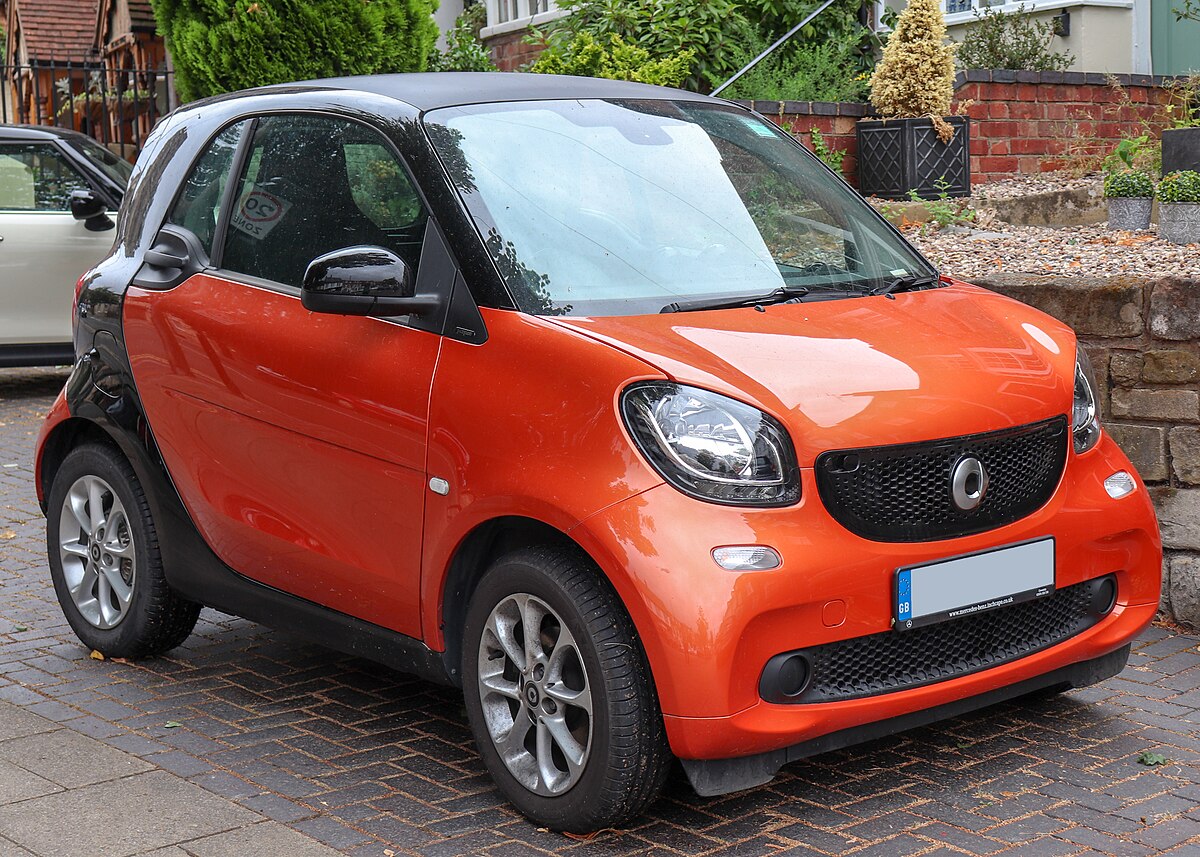
3. Smart Fortwo
The Smart Fortwo might be the ultimate city car—zipping through traffic, parking in tight spots, and sipping fuel—but when it comes to camping, it falls flat on nearly every count. The Smart’s defining trait—its ultra-compact footprint—becomes a major liability when you attempt to bring along even basic camping equipment. There’s barely enough room for two people to sit comfortably, let alone store a tent, sleeping bags, and other necessary gear.
One of the first issues you’ll run into is space. The trunk, if you can call it that, is tiny. With the rear shelf down, you might fit a small backpack and a few grocery items, but certainly not a full loadout for a camping trip. Interior space is similarly cramped.
The seats don’t recline fully, and there’s no rear seat or fold-flat configuration to allow for sleeping or even stretching out. If the weather turns bad or you’re hoping to spend a night inside the car, your only option is to recline awkwardly and try to make peace with discomfort.
Beyond space, the ride quality and handling are simply not cut out for anything beyond smooth pavement. The Smart Fortwo has a short wheelbase and a high center of gravity, making it feel unstable on rough roads or gravel. Even modest forest trails can feel like obstacle courses. The tiny wheels and narrow tires don’t provide the grip or shock absorption needed for uneven terrain, and the lack of all-wheel drive leaves you vulnerable to getting stuck in soft dirt or mud.
Even for urban camping or quick overnights, the Smart Fortwo doesn’t bring much to the table. While its size may help it blend in for stealth camping, the lack of comfort, space, and gear-hauling capability makes it an impractical choice. It’s a brilliant piece of engineering for what it is—a microcar designed for dense cities—but when it comes to setting up camp or venturing into nature, the Smart Fortwo leaves you feeling under-equipped and overexposed.
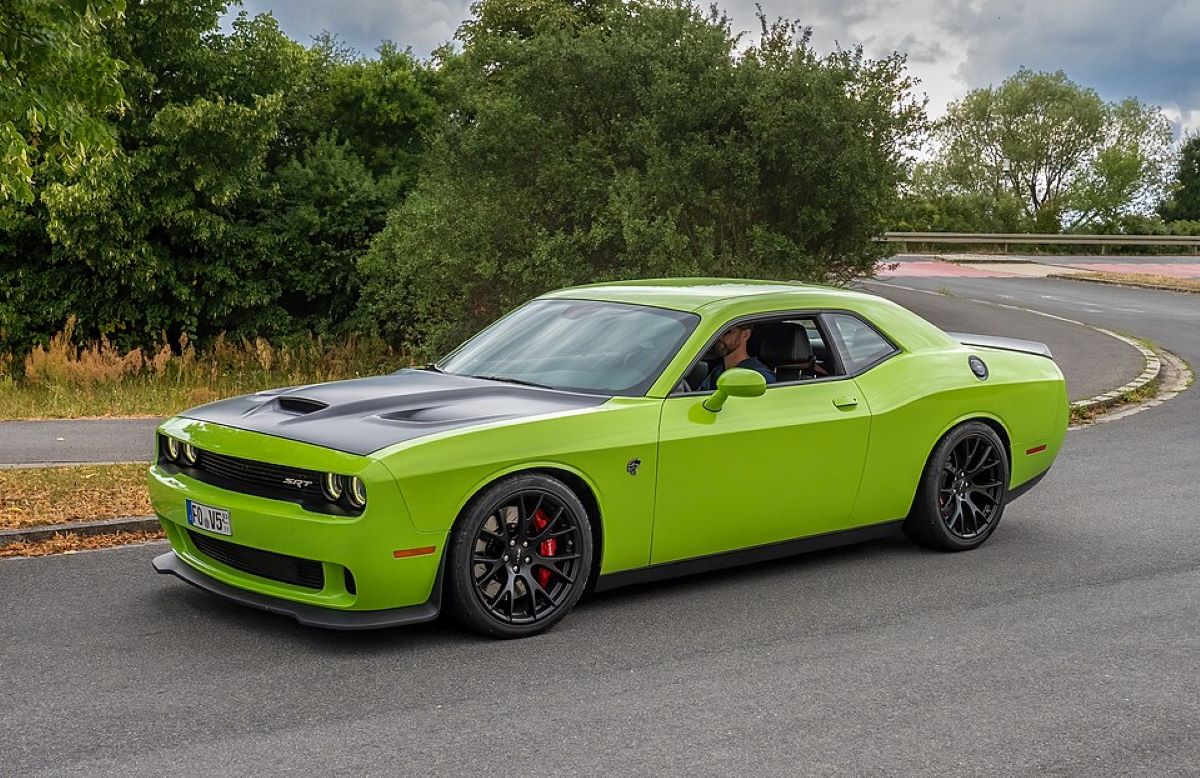
4. Dodge Challenger
The Dodge Challenger is a modern muscle car icon. With its retro styling, raw power, and roaring engine, it’s built for straight-line speed and bold presence.
Unfortunately, none of those qualities translates well to a camping environment. The car’s massive size hides some surprisingly impractical design choices that make it a nightmare for hauling gear, navigating unpaved roads, or sleeping inside.
One of the first and most frustrating issues is the car’s low ride height and long body. The Challenger’s front bumper is low-slung, making it prone to scraping on uneven driveways, let alone gravel roads or dirt trails. It has rear-wheel drive as standard, which becomes a serious disadvantage when traction is needed on soft or slippery surfaces.
Unlike a crossover or SUV, there’s no off-road package or AWD option in the base or mid-level trims that could compensate for this limitation.
Inside, the Challenger offers large front seats, but the rear seats are cramped and not easily accessible. The rear seatbacks can fold, but the pass-through to the trunk is too small to be functional for sleeping or storing large gear.
The trunk itself is spacious compared to other muscle cars, but it’s oddly shaped, shallow, and limited in height, making it ill-suited to bulkier camping equipment. It’s possible to cram in a small tent and minimal gear, but packing for more than a solo trip would be extremely difficult.
Additionally, the Challenger’s stiff suspension and heavy body make long drives on uneven roads uncomfortable and inefficient. The car guzzles fuel, which means frequent stops in areas that may not have many gas stations.
If your idea of camping is off-grid or away from developed sites, the Challenger’s range and reliability over rough terrain are simply not dependable. It’s a fantastic vehicle for road trips and scenic drives, but when it comes to camping, this muscle car is all growl and no gear.
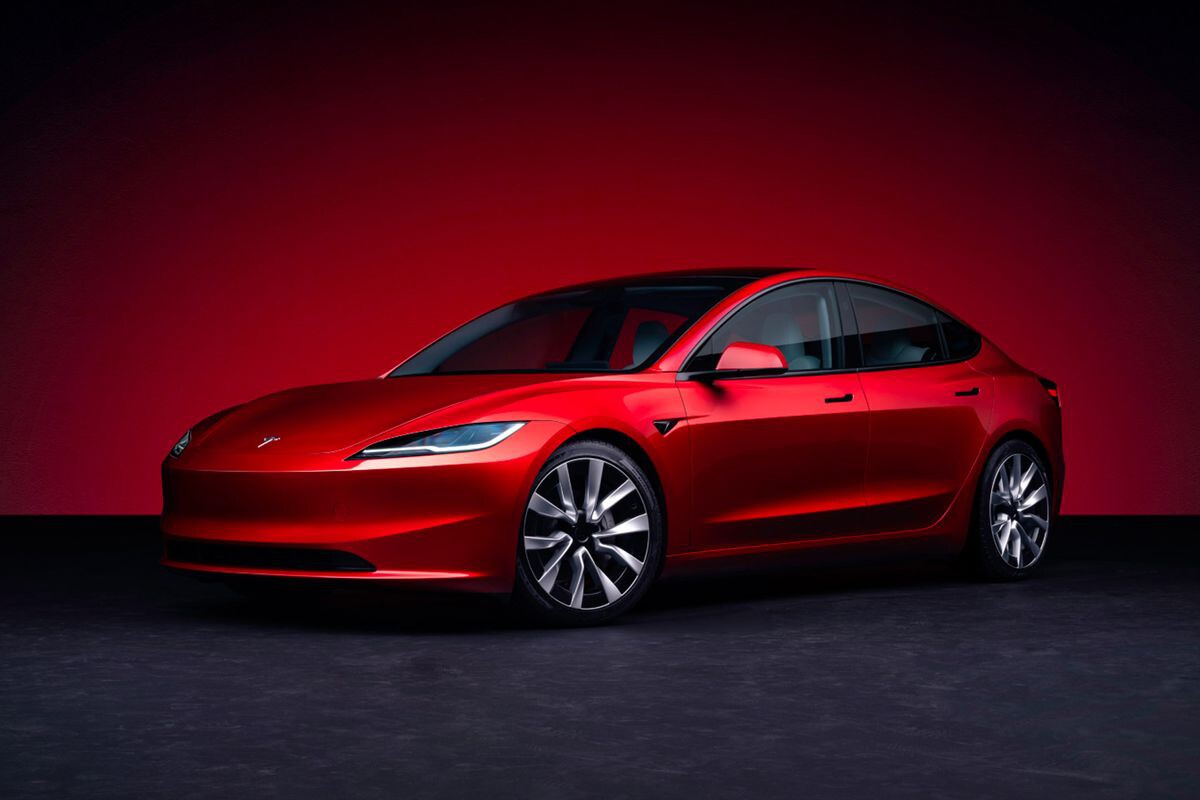
5. Tesla Model 3
At first glance, the Tesla Model 3 might seem like a futuristic camping solution. With “Camp Mode,” a quiet electric drivetrain, and tech-forward interior, it holds promise for overnight stays.
However, the reality quickly becomes more complicated when you try to use it as a practical camping vehicle. While better than some sedans in specific ways, the Model 3’s limitations become clear the farther you get from city infrastructure and pavement.
One of the main problems is ground clearance. The Model 3 was not built for off-road use, and its low-slung design makes it vulnerable on gravel, rutted paths, or undeveloped campsites.
The battery pack lies beneath the floor, which adds weight and increases the risk of undercarriage damage if you stray from well-maintained roads. Even slight bumps or unexpected rocks could damage critical components, leading to expensive repairs or immobilization far from a service center.
Another challenge is range anxiety. While the Model 3 boasts impressive mileage on a full charge, camping typically involves remote locations where charging stations are scarce. If you run the heater, AC, or electronics in Camp Mode overnight, you’ll be draining your battery without recourse unless you’re near a reliable charging solution. Unlike gas vehicles, where a spare jerry can might save the day, running out of charge in a Tesla is a much more complex problem, especially in wilderness areas.
Cargo space is also a mixed bag. While the Model 3 has a front trunk and fold-flat rear seats, it still doesn’t offer the room of an SUV or van. A couple might manage to sleep inside with a custom mattress and the seats folded down, but for longer trips or more gear-intensive outings, the space runs out quickly. Additionally, the sleek interior, while beautiful, isn’t built to withstand muddy boots, sandy gear, or wet tents.
Tesla’s Model 3 is ideal for overnight stays at roadside stops or tech-savvy glamping scenarios, but it’s not meant for true off-grid camping. Until charging infrastructure and off-road EV capabilities catch up, it remains a vehicle best suited for digital nomads who stick close to civilization, not those seeking to lose themselves in the wild.
Also Read: 13 Engines That Made Japanese Cars Unstoppable and Changed Performance Culture Forever
Camping is about more than just pitching a tent and lighting a campfire—it’s a full experience, one that requires planning, adaptability, and the right tools. Chief among those tools is your vehicle. It determines how far you can go, how much you can carry, and how comfortably you can live once you’re out there.
Whether you’re heading to a quiet state park or deep into the backcountry, the vehicle you choose becomes a defining part of your trip. It’s your mode of travel, your mobile storage unit, and sometimes, your only source of shelter. That’s why choosing the right car for camping isn’t just important—it’s essential.
The five vehicles we explored as ideal for camping—the Subaru Outback, Toyota 4Runner, Honda Element, Jeep Wrangler, and Ford Transit Connect—each brings their unique strengths to the camping table. From the Outback’s balanced blend of comfort and off-road capability to the Ford Transit Connect’s compact camper-van potential, these vehicles show that camping readiness comes in many forms.
They’re not just rugged; they’re reliable. They’re not just spacious; they’re thoughtfully designed. These vehicles provide room to sleep, clever ways to store your gear, and the resilience to handle uneven roads and unpredictable conditions. They make it easier to say yes to adventure and harder to find reasons not to go.
Just as important, however, is recognizing which cars aren’t suited for the job. The Mazda Miata, Chevrolet Corvette, Smart Fortwo, Dodge Challenger, and Tesla Model 3 are all impressive vehicles in their own right, but when judged through the lens of camping practicality, they fall short.
Whether it’s limited storage space, poor ground clearance, uncomfortable interiors, or terrain limitations, each of these vehicles demonstrates why not every car is a candidate for the campsite. They remind us that form doesn’t always equal function, and that some cars are best left to the city streets, race tracks, or suburban drives.
Camping demands more than aesthetics—it demands flexibility, utility, and dependability. It’s not just about getting to your destination; it’s about thriving once you’re there. It’s about carrying your gear, cooking a meal, changing clothes, sleeping comfortably, and enjoying the natural world without feeling like your vehicle is holding you back. A car that can’t help you do those things isn’t just inconvenient—it can seriously diminish your experience, if not compromise your safety.
In the end, the best camping car is the one that aligns with your goals and lifestyle. If you prioritize off-road exploration, something like a Jeep Wrangler or 4Runner makes perfect sense. If you want simplicity and comfort without investing in a full camper van, the Honda Element or Ford Transit Connect may be the answer.
Regardless of your needs, the key takeaway is this: the vehicle you bring can elevate your trip or limit it. Choose wisely, plan smart, and enjoy the road—because the best camping trips don’t begin at the campsite; they begin in your driveway.
